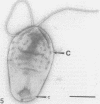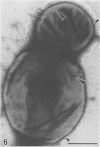Abstract
During attempts to establish tissue cultures from hepatopancreas, heart, and hemolymph of the giant tiger prawn (Penaeus monodon), using a medium including penicillin, streptomycin, and amphotericin B, bacterial contamination in the form of a sheet of growth attached to the tissue culture vessel was a persistent problem. Contaminant bacteria were teardrop-shaped cells arranged in rosettes, and electron microscopy revealed buds, crateriform structures, and the absence of a peptidoglycan layer in the cell wall, features characteristic of bacteria in the Planctomyces-Pirellula group, a phylogenetically distinct group of eubacteria. Two strains of contaminant bacteria were isolated in pure culture. Both exhibited morphology and antibiotic resistance consistent with their membership in the Planctomyces-Pirellula group (order Planctomycetales) of eubacteria. Tissue culture media for marine invertebrates may select for such bacteria if high concentrations of cell wall synthesis-inhibiting antibiotics are included.
Full text
PDF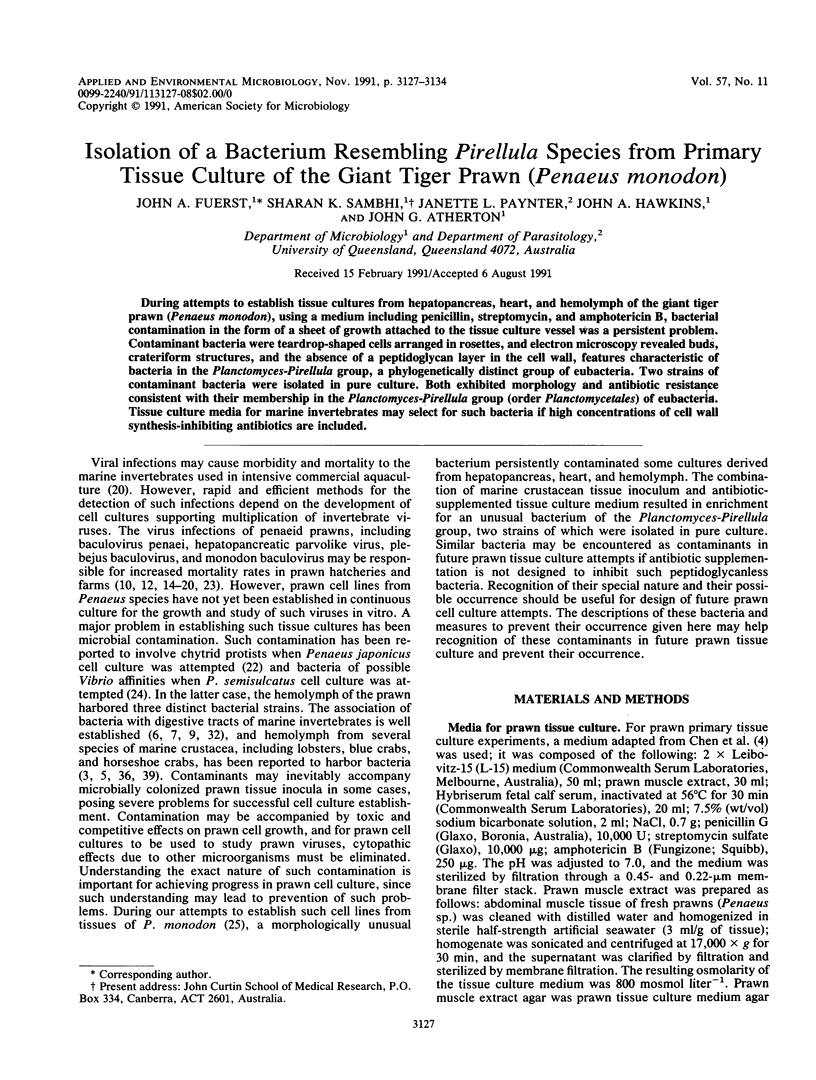
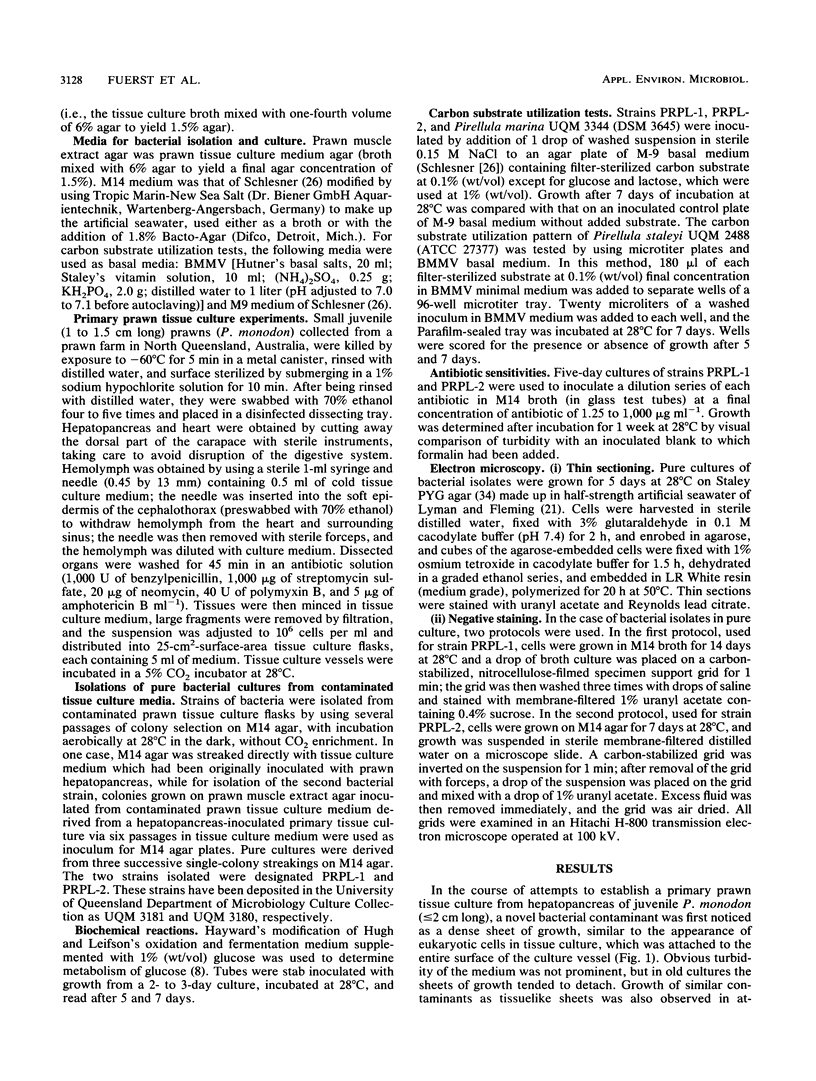
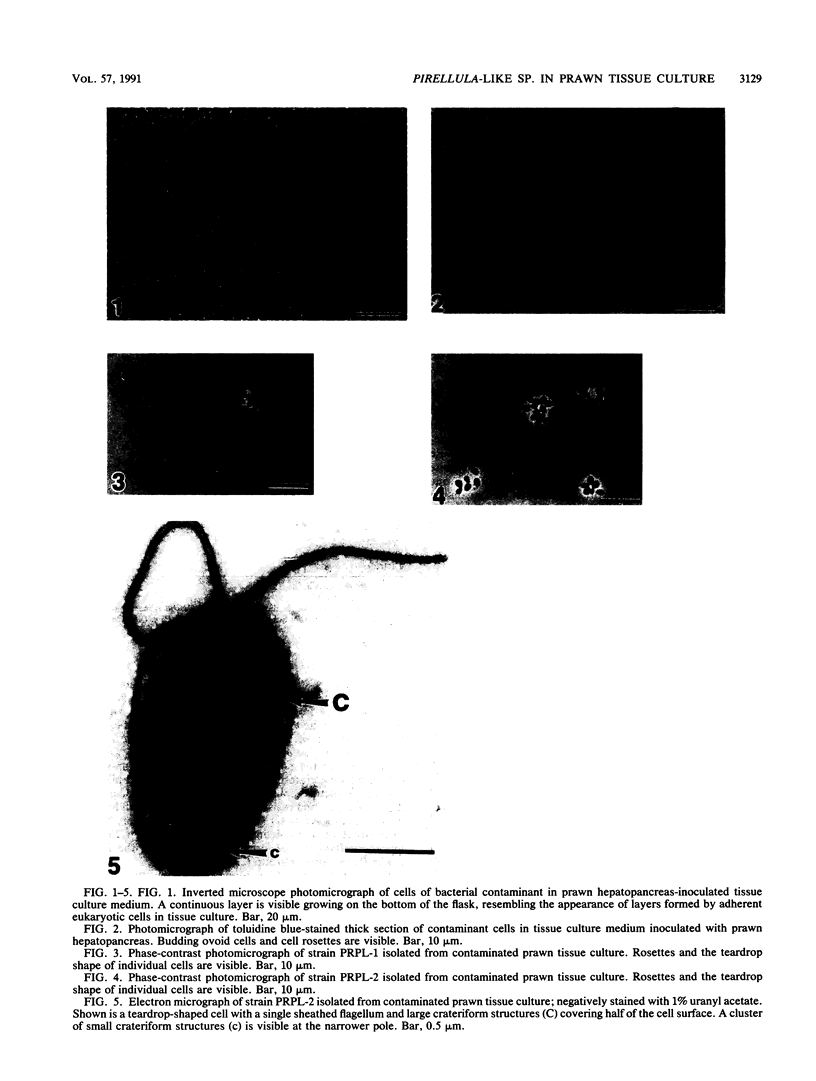
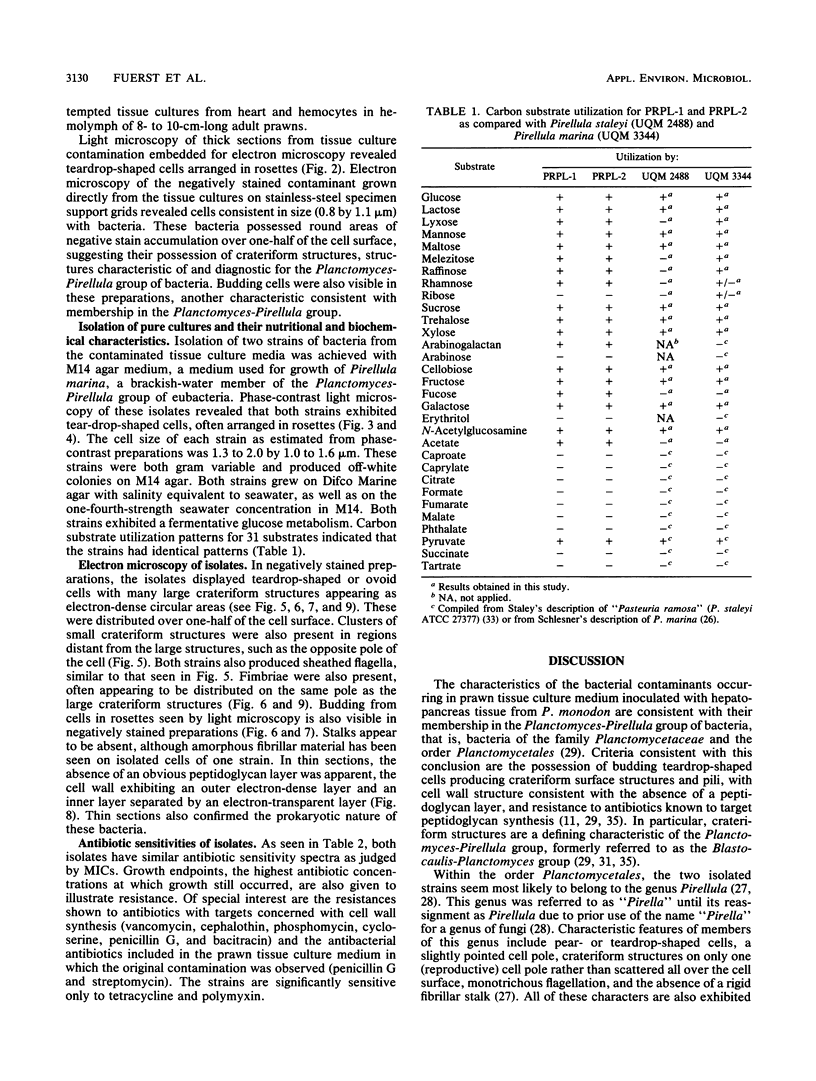
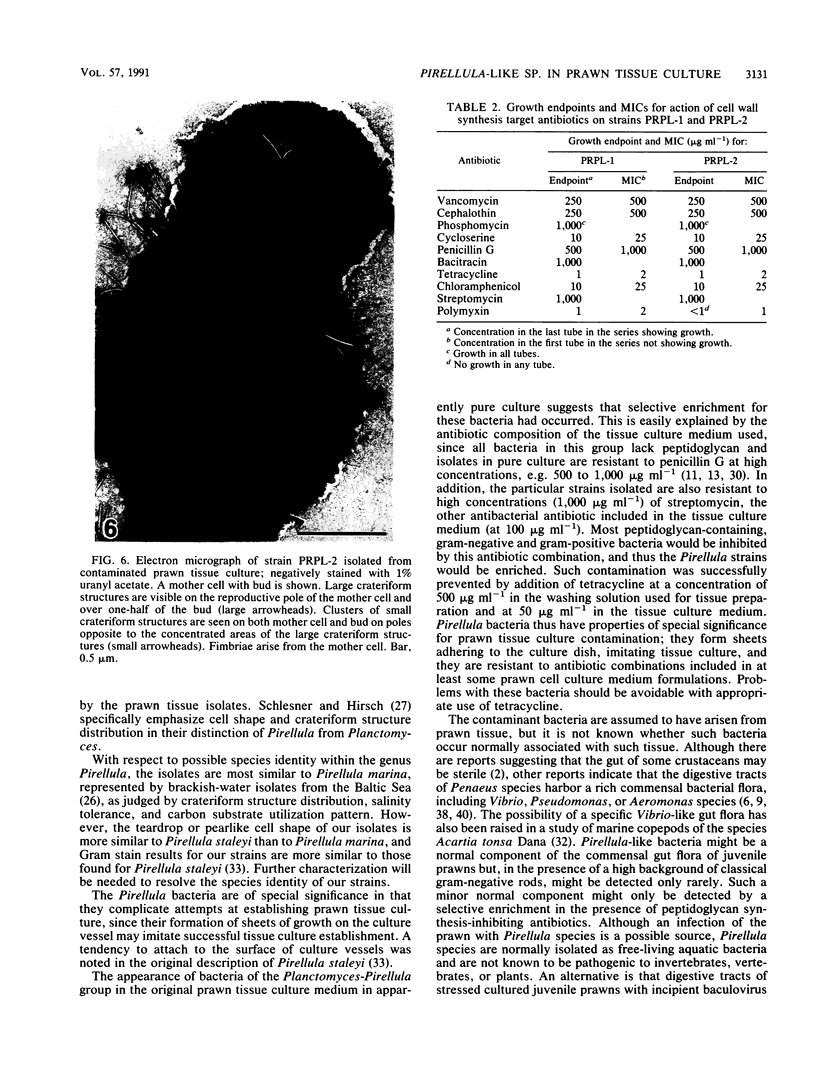
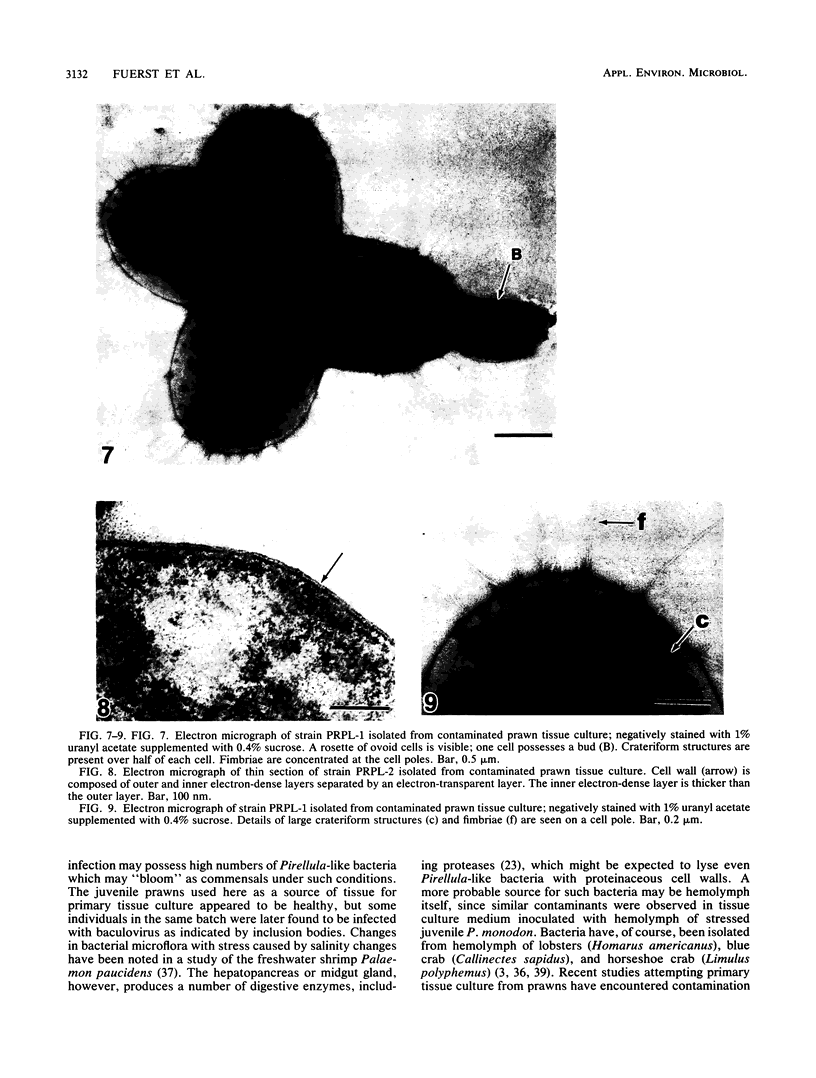
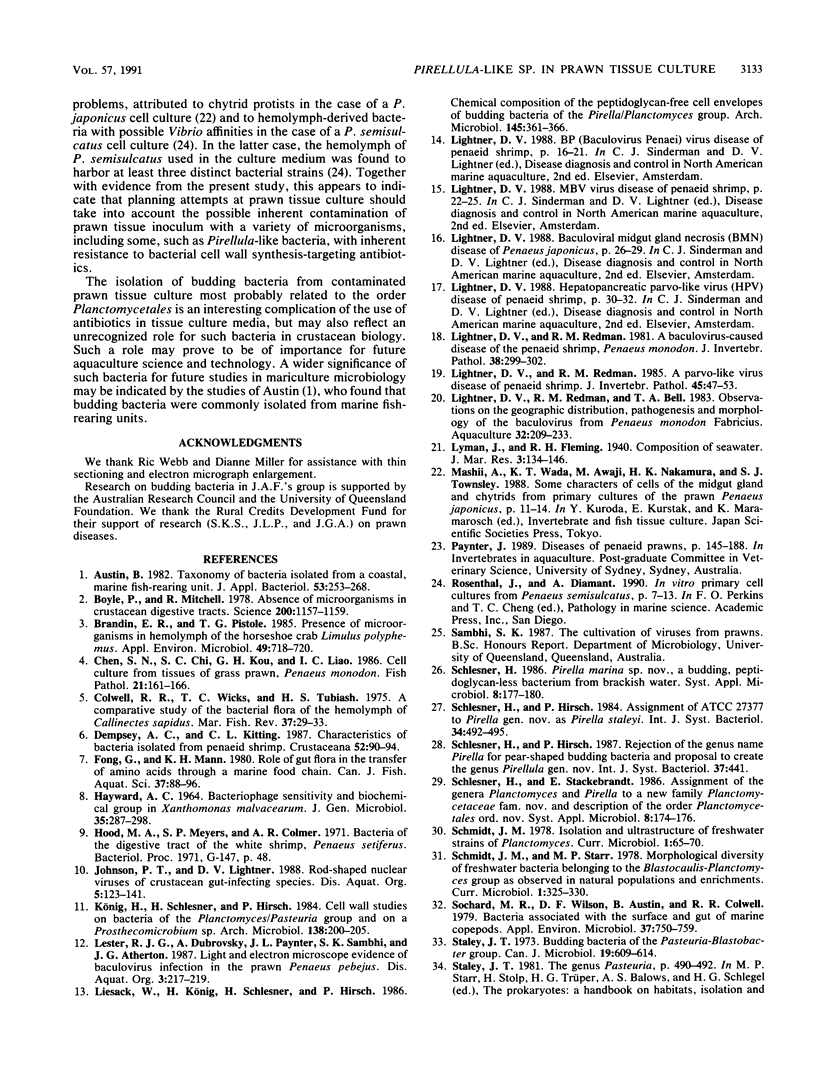
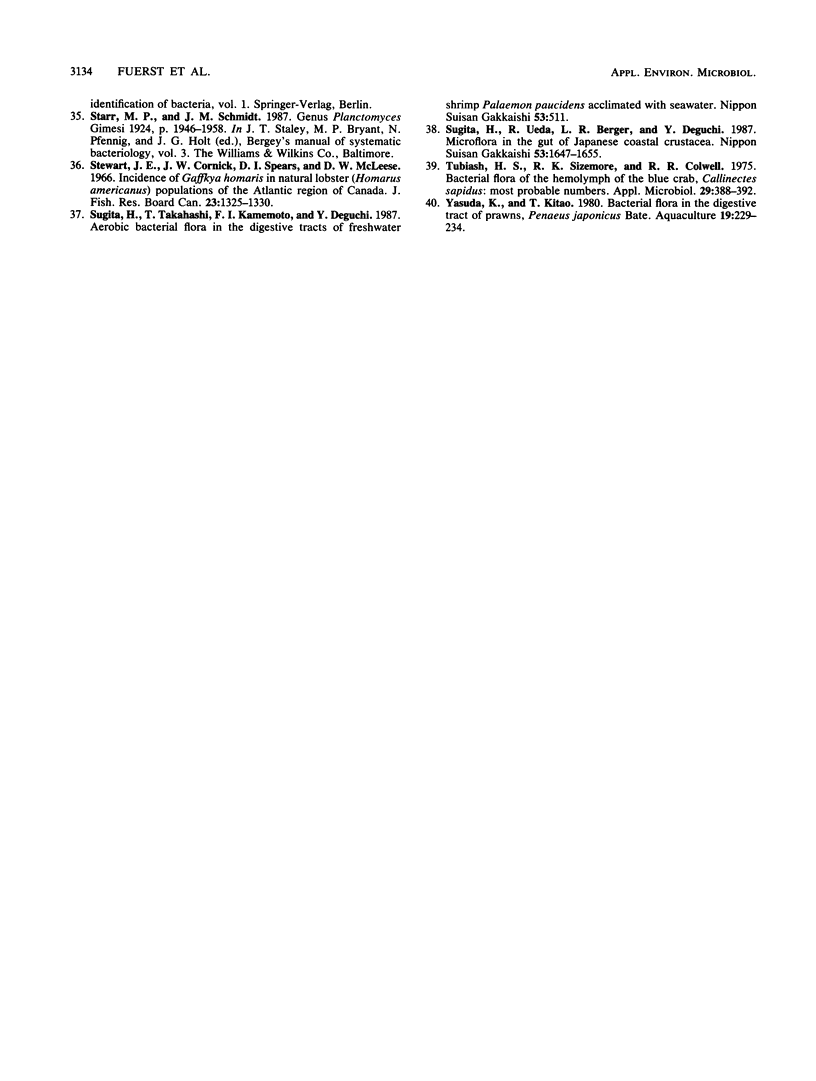
Images in this article
Selected References
These references are in PubMed. This may not be the complete list of references from this article.
- Boyle P. J., Mitchell R. Absence of microorganisms in crustacean digestive tracts. Science. 1978 Jun 9;200(4346):1157–1159. doi: 10.1126/science.200.4346.1157. [DOI] [PubMed] [Google Scholar]
- Brandin E. R., Pistole T. G. Presence of microorganisms in hemolymph of the horseshoe crab Limulus polyphemus. Appl Environ Microbiol. 1985 Mar;49(3):718–720. doi: 10.1128/aem.49.3.718-720.1985. [DOI] [PMC free article] [PubMed] [Google Scholar]
- HAYWARD A. C. BACTERIOPHAGE SENSITIVITY AND BIOCHEMICAL GROUP IN XANTHOMONAS MALVACEARUM. J Gen Microbiol. 1964 May;35:287–298. doi: 10.1099/00221287-35-2-287. [DOI] [PubMed] [Google Scholar]
- Sochard M. R., Wilson D. F., Austin B., Colwell R. R. Bacteria associated with the surface and gut of marine copepods. Appl Environ Microbiol. 1979 Apr;37(4):750–759. doi: 10.1128/aem.37.4.750-759.1979. [DOI] [PMC free article] [PubMed] [Google Scholar]
- Staley J. T. Budding bacteria of the Pasteuria-Blastobacter group. Can J Microbiol. 1973 May;19(5):609–614. doi: 10.1139/m73-100. [DOI] [PubMed] [Google Scholar]
- Tubiash H. S., Sizemore R. K., Colwell R. R. Bacterial flora of the hemolymph of the blue crab, Callinectes sapidus: most probable numbers. Appl Microbiol. 1975 Mar;29(3):388–392. doi: 10.1128/am.29.3.388-392.1975. [DOI] [PMC free article] [PubMed] [Google Scholar]







